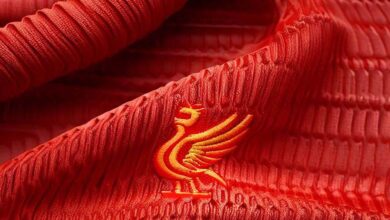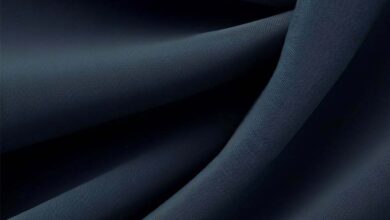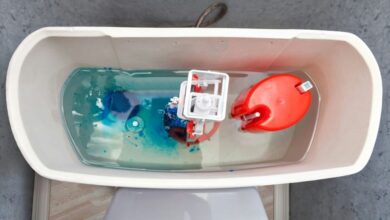What is Milk Silk Fabric? Discover The Power Of Luxurious Silk

Are you searching for the answer to what is milk silk fabric? You are now in the right place. Today I will reveal all about the Milk silk fabric.
Milk silk fabric is a smooth and luxurious textile made from milk protein fibers. It is a sustainable alternative to traditional silk, offering similar qualities and a soft, silky texture.
This fabric is hypoallergenic, breathable, and moisture-wicking, making it ideal for clothing and other textile applications. Milk silk fabric is produced by extracting the protein casein from milk and then spinning it into fine fibers woven or knitted into fabric.
With its sustainable and comfortable properties, milk silk fabric is gaining popularity in the fashion industry as a more ethical and environmentally conscious textile choice.
What Is Milk Silk Fabric?

Milk silk fabric, also known as milk fiber fabric, is a unique type of fabric that is made from a blend of milk protein and other fibers.
This innovative fabric is gaining popularity in the fashion industry due to its amazing properties and sustainable production process.
Here, we will explore the key points about milk silk fabric and why it is worth considering for your wardrobe.
Properties Of Milk Silk Fabric:
- Soft and luxurious: Milk silk fabric has a silky smooth texture that feels incredibly soft against the skin. Its luxurious feel makes it a favorite choice for intimate apparel, loungewear, and even baby clothes.
- Moisture-wicking: One of the standout features of milk silk fabric is its exceptional moisture-wicking ability. It can efficiently absorb moisture and keep the skin dry and comfortable, making it an ideal choice for activewear and sportswear.
- Breathable: Milk silk fabric is highly breathable, allowing air to circulate freely, which helps to regulate body temperature. This makes it a great choice for clothing worn in warm weather or during physical activities.
- Hypoallergenic: Milk silk fabric is a great option if you have sensitive skin or allergies. It is naturally hypoallergenic and gentle on the skin, reducing the risk of irritation or reactions.
- Antibacterial: Milk silk fabric contains natural proteins that possess antibacterial properties. This helps to inhibit the growth of odor-causing bacteria, keeping your clothing fresh and smelling great even after multiple wears.
- Sustainable: Milk silk fabric is considered an eco-friendly option, made from renewable resources. The production process involves extracting the milk protein from surplus dairy products, such as milk unsuitable for consumption.
How Is Milk Silk Fabric Made?
The production process of milk silk fabric involves several steps:
- Milk protein extraction: The milk protein, or casein, is separated from surplus milk. This milk is unsuitable for human consumption and would otherwise go to waste.
- Blending with other fibers: The extracted milk protein is then blended with other fibers, such as polyester or viscose, to create a strong and versatile fabric.
- Spinning: The blend is spun into yarns using a spinning machine, which gives it the desired structure and strength.
- Weaving or knitting: The yarns are woven or knitted together to form the milk silk fabric. The weaving or knitting technique can vary for different textures and appearances.
- Finishing: After the fabric is produced, it undergoes various finishing processes, such as dyeing, washing, and softening, to enhance its appearance and performance.
Care Instructions For Milk Silk Fabric:
Washing:
Milk silk fabric is generally safe to machine wash on a gentle cycle with mild detergent. However, checking the care instructions specific to the garment is always recommended.
Drying:
Air-drying milk silk fabric is best to maintain its softness and shape. If necessary, you can tumble dry on a low heat setting.
Ironing:
Use a low-heat iron setting or steam to remove wrinkles from milk silk fabric. Avoid direct contact with high heat to prevent damage.
Storage:
Store milk silk clothing items in a cool, dry place to prevent moisture buildup and protect them from sunlight.
Milk silk fabric offers a luxurious and sustainable alternative to traditional fabrics. Its exceptional properties make it suitable for clothing, from intimates to activewear.
Milk silk fabric can provide comfort, style, and durability for years with proper care. So why not try giving milk silk fabric a try and experience its unique benefits?
Milk Fabric Advantages And Disadvantages

Milk silk fabric, also known as milk fiber fabric, is a relatively new and innovative textile that has gained popularity in recent years.
Like any fabric, milk silk has its own advantages and disadvantages that are worth considering before incorporating it into your wardrobe or home textiles.
Advantages:
Luxurious feel:
Milk silk fabric has a smooth, silky texture that feels incredibly soft against the skin. It provides a luxurious and comfortable experience for clothing items like pajamas, underwear, and loungewear.
Moisture-wicking properties:
One of the key advantages of milk silk fabric is its ability to wick away moisture effectively. It has excellent moisture absorption properties, keeping you dry and comfortable even during intense physical activities.
Breathability:
Milk silk is breathable, allowing air to circulate freely through the fabric. This helps regulate body temperature and prevents overheating, making it suitable for all seasons.
Hypoallergenic:
Milk silk fabric is naturally hypoallergenic due to the absence of chemicals that can cause skin irritations. It is a suitable choice for individuals with sensitive skin or allergies.
Environmental sustainability:
Milk silk is an eco-friendly fabric derived from a renewable resource (milk) and requires minimal processing. Additionally, the by-product of milk fiber production can be used as a fertilizer, reducing waste.
Disadvantages:
Limited color options:
Milk silk fabric does not take dye easily, restricting the available color options. It typically comes in neutral or pastel shades, making it less versatile for those who prefer bolder or vibrant colors.
Durability concerns:
While milk silk fabric is soft and delicate, it may not be as durable or long-lasting as some other fabrics. It is prone to pilling and may require special care to maintain its quality over time.
Cost:
Milk silk fabric is often more expensive than traditional fabrics like cotton or polyester. This higher cost is due to the complex manufacturing process and limited availability.
Require Care instructions:
Milk silk fabric may require specific care instructions to prevent shrinkage or damage. It is recommended to follow the washing guidelines provided by the manufacturer to ensure the fabric’s longevity.
Milk silk fabric offers a range of advantages, such as a luxurious feel, moisture-wicking properties, breathability, hypoallergenic nature, and environmental sustainability.
However, it also has certain limitations, including limited color options, durability concerns, higher cost, and specific care requirements.
Consider these factors when choosing milk silk fabric for your clothing or home textiles to make an informed decision that aligns with your preferences and needs.
Which Is Better, Spandex Fabric Or Milk Silk?

Milk silk fabric and spandex fabric are popular choices in the fashion industry, each with its own advantages.
Let’s take a closer look at these fabrics and compare them to determine which one comes out on top.
Milk Silk Fabric:
- Milk silk fabric is a type of textile that blends natural milk protein fibers with synthetic fibers like polyester or spandex.
- It is incredibly soft and smooth, with a luxurious feel that resembles silk.
- This fabric is known for its excellent breathability, which keeps you comfortable even on warm days.
- Milk silk fabric has good moisture-wicking properties, which is ideal for athletic wear or other activities requiring moisture management.
- It is lightweight and drapes beautifully, creating elegant and flowy garments.
- Milk silk fabric is hypoallergenic and gentle on the skin, making it a suitable choice for sensitive skin.
- This fabric is easy to care for, as it is machine washable and retains its shape well after multiple washes.
Spandex Fabric:
- Spandex fabric, also known as elastane or lycra, is a synthetic fiber known for its exceptional stretch and recovery properties.
- It is highly elastic and can stretch up to 500% of its original length, then return to its original shape.
- Spandex fabric is commonly used in sportswear, swimwear, and form-fitting garments because it provides a snug and comfortable fit.
- It offers great freedom of movement, making it an excellent choice for activewear and athletic gear.
- Spandex fabric is resistant to damage from sweat, oils, and lotions, making it long-lasting and durable.
- It is easy to care for, as it can be machine washed and dried without losing shape or elasticity.
- However, spandex fabric may not be as breathable as milk silk fabric, and some people may find it less comfortable in warmer weather.
Both milk silk fabric and spandex fabric have their unique advantages, and the choice between them depends on the specific needs and preferences of the individual.
Milk silk fabric offers a luxurious feel, breathability, and hypoallergenic properties, making it suitable for various garments.
On the other hand, spandex fabric provides exceptional stretch and recovery, perfect for activewear and form-fitting clothing.
Ultimately, the decision between these two fabrics comes down to personal preference and the garment’s intended use.
Is Milk Silk Polyester?
Milk silk fabric is not made from polyester. It is a type of fabric that is created using milk protein fibers. These fibers are extracted from the casein protein in cow’s milk, making it a natural and eco-friendly alternative to synthetic fabrics.
Milk silk fabric has a luxurious and silky texture with a smooth and lightweight feel. It is known for its breathability and moisture-wicking properties, which make it comfortable to wear in warm weather.
Milk silk fabric also has a natural antibacterial property, making it resistant to odor and bacterial growth.
Furthermore, this fabric has good draping characteristics, allowing it to flow beautifully in clothing. Milk silk fabric is a sustainable and innovative material that offers comfort, style, and environmental benefits.
Frequently Asked Questions For What Is Milk Silk Fabric?
Is Milk Silk Fabric Eco-Friendly?
Is Milk Silk Fabric Suitable For Sensitive Skin?
Can Milk Silk Fabric Be Dyed?
It is recommended to follow the fabric’s care instructions for best results.
How Do I Care For Milk Silk Fabric?
Iron on low heat if necessary, and store the fabric in a cool, dry place.
Sum Up
Milk silk fabric is a unique and innovative textile that offers numerous benefits to both fashion and sustainability. With its luxurious feel and elegant drape, milk silk fabric provides a natural alternative to traditional silk, making it a popular choice among ethical fashion enthusiasts.
Its moisture-wicking properties and hypoallergenic nature make it ideal for sensitive skin, providing unparalleled comfort and breathability.
Additionally, milk silk fabric is eco-friendly, made using a sustainable and cruelty-free process that repurposes milk protein waste. This fabric is also durable, ensuring that your garments stand the test of time.
Whether you’re looking for a stylish and environmentally-friendly addition to your wardrobe or an alternative to traditional silk, milk silk fabric is an excellent choice that combines luxury, comfort, and sustainability. Embrace the future of fashion with milk silk fabric.
Read More:



